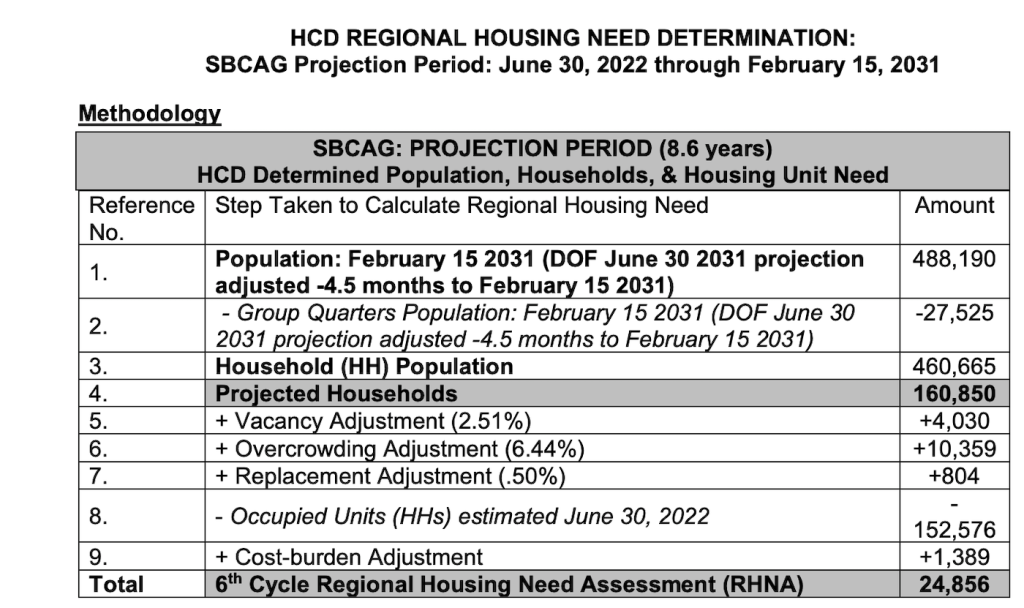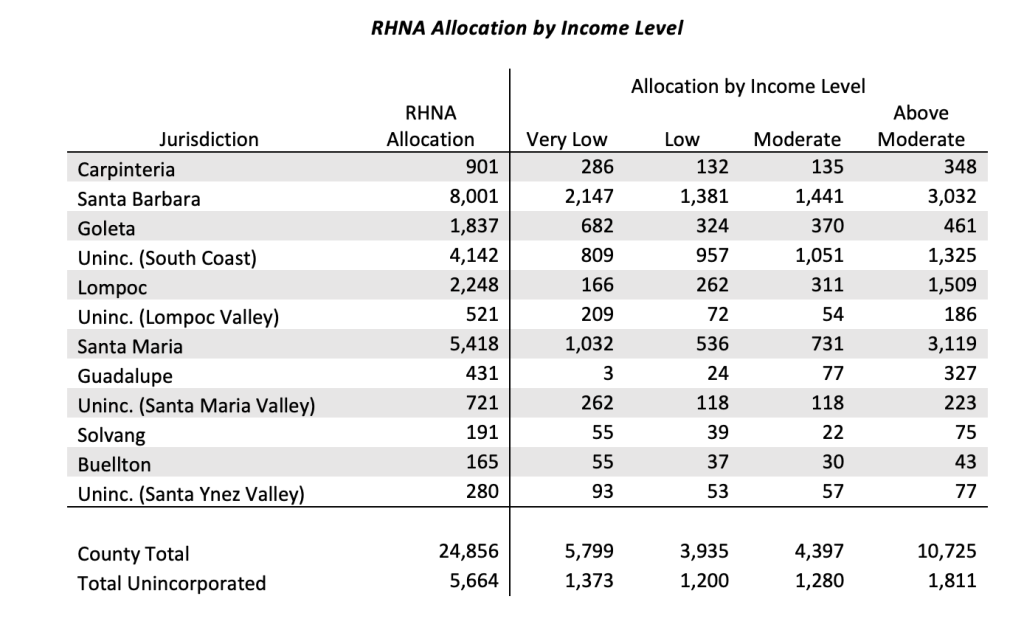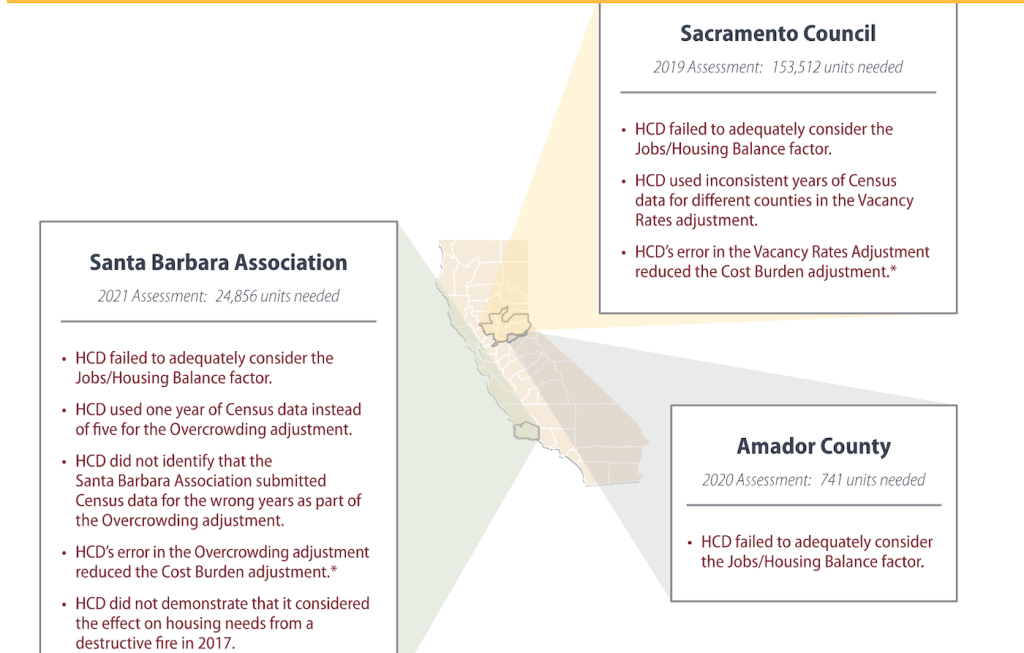State Audit Finds Problems with State’s Mandated Housing Numbers
On March 17, 2022, the California State Auditor released a very important report on California’s Housing and Community Development Department’s (HCD) Regional Housing Needs Allocations (RHNA). The audit was assertively requested by the California Alliance of Local Elected (CALE) officials, a strongly activist group of councilmembers from across the state. CALE asserts that California’s Regional Housing Needs Allocations (RHNA) numbers are unattainable.
Backstory: RHNA is effectively a state mandate to local governments for housing to be built. Some communities are aghast at their allocation, particularly if they’re built out, dense areas. Local governments increasingly feel the state is not sensitive to their area’s concerns, and that municipal governments don’t actually build housing. Developers do that.
With the passage of Senate Bills 9 and 10, developers are more in control of this process than ever. The state is overriding local controls to get more housing built.
The RHNA process:The state uses a formula to calculate housing needs, and then sends its assessment to each county or regional government. The state believes it needs 2.5 million units of housing by 2030, and many of its assumptions have been questioned, such as continued population growth. Six Southern California counties would be expected to produce half those units. The Biden Administration estimates that the entire country needs 3.9 million units of housing, throwing California’s number into question.
In 2020, the state allocated 24,856 housing units to Santa Barbara County to be built by 2031. The state’s formula is as follows:
Santa Barbara County Association of Governments (SBCAG) then allocates RHNA to our local jurisdictions:
The Unincorporated South Coast area is as follows:

– Carpinteria Valley
– Montecito
– Summerland
– Mission Canyon
– Goleta Unincorporated Area (Isla Vista, HWY 154, New Cuyama and Ventucopa)
Per SBCAG, 4,142 units of housing need to be built in these areas to accommodate the state’s RHNA.
During a Santa Barbara City Council hearing, councilmembers expressed shock at their RHNA of 8,000 new units, in a built-out city. They weren’t alone: a sense of shock and outrage echoed across the state. Nearly all of the Association of Bay Area Governments’ communities appealed their RHNA in late 2021, and 27 out of 28 of those appeals were denied. Orange County sued the state, saying it needs 651,000 housing units, not the 1.34 million the state allocated to it. They lost their lawsuit.

The California Auditor reviewed data for three communities:
– City of Sacramento
– Amador County
– Santa Barbara County
The REALLY Big Deal: The Auditor deemed the RHNA incorrect in all three reviews, and pointed out with the state’s data and process:

This is consistent with California Little Hoover Commission’s Housing report, chaired by our former Assembly Rep Pedro Nava:
“Using the best technology and methodologies available, California should identify data and analysis gaps. The state should transparently use that information in its policymaking. Tools should be shared with local governments either at cost or, preferably, for free.
California’s process for determining how much and where housing needs to be built fails to account for how much housing, particularly affordable housing, is actually built. Furthermore, under the current system, development is not planned where it is needed…”
(Source: Little Hoover Commission Report #267, March 2022: California Housing: Building a More Affordable Future)
The Bad News: The Auditor estimates Santa Barbara County’s number was too low, by about 1,300 units. The report charged that HCD did not account for the loss of structures in the Thomas Fire, asserting it was more than 1,000. But that number includes Ventura County’s losses. Santa Barbara County only lost 49 structures, with an additional 38 damaged, per MFPD Chief Kevin Taylor. The state also incorrectly used 2010 data on the jobs / housing balance for our county.
What about vacancies? With vacation rentals eating into housing supply, true vacancy rates are likely worse than estimated. The U.S. Census Bureau considers second homes and vacation rentals ‘vacant,’ but those are not truly ‘vacant’ for someone seeking a place to live.
While the Audit was very much needed, and calls into question the validity of the state’s RHNA calculations, not everyone was thrilled. Chris Elmendorf, a law professor at UC Davis and co-author of a study for the UCLA Lewis Center on RHNA, said, ‘It treats California’s process for “regional housing need” determinations as if it were some kind of quasi-scientific exercise with right answers, when in fact it’s a kludge, ad hoc’ery all the way down.’ – A lot of communities in California would agree.
Sharon Byrne is the Executive Director of the Montecito Association





